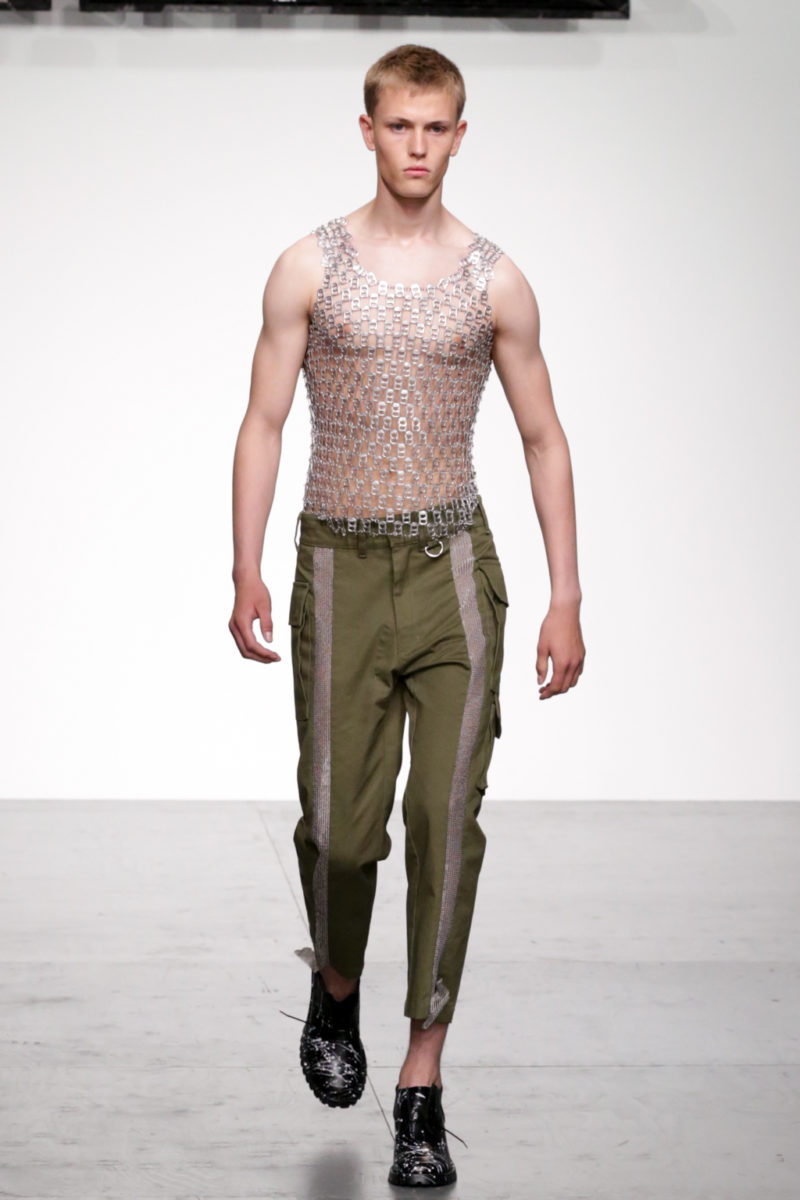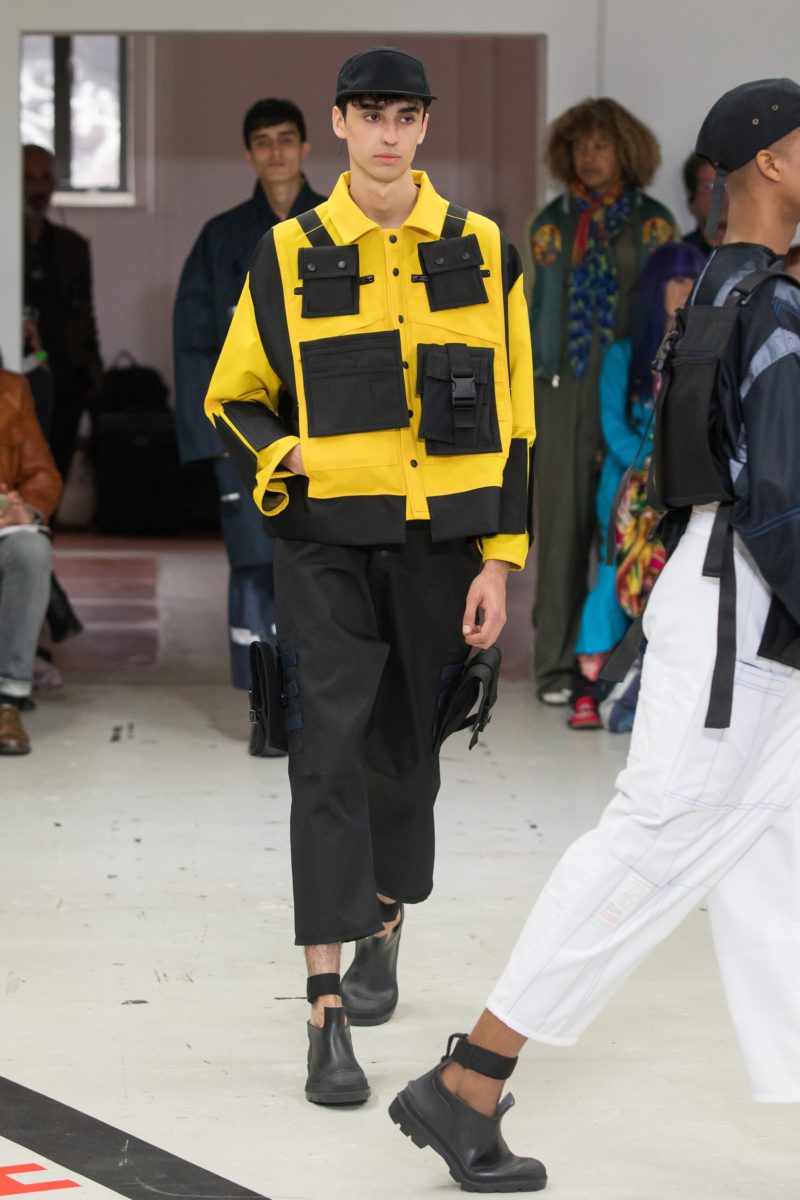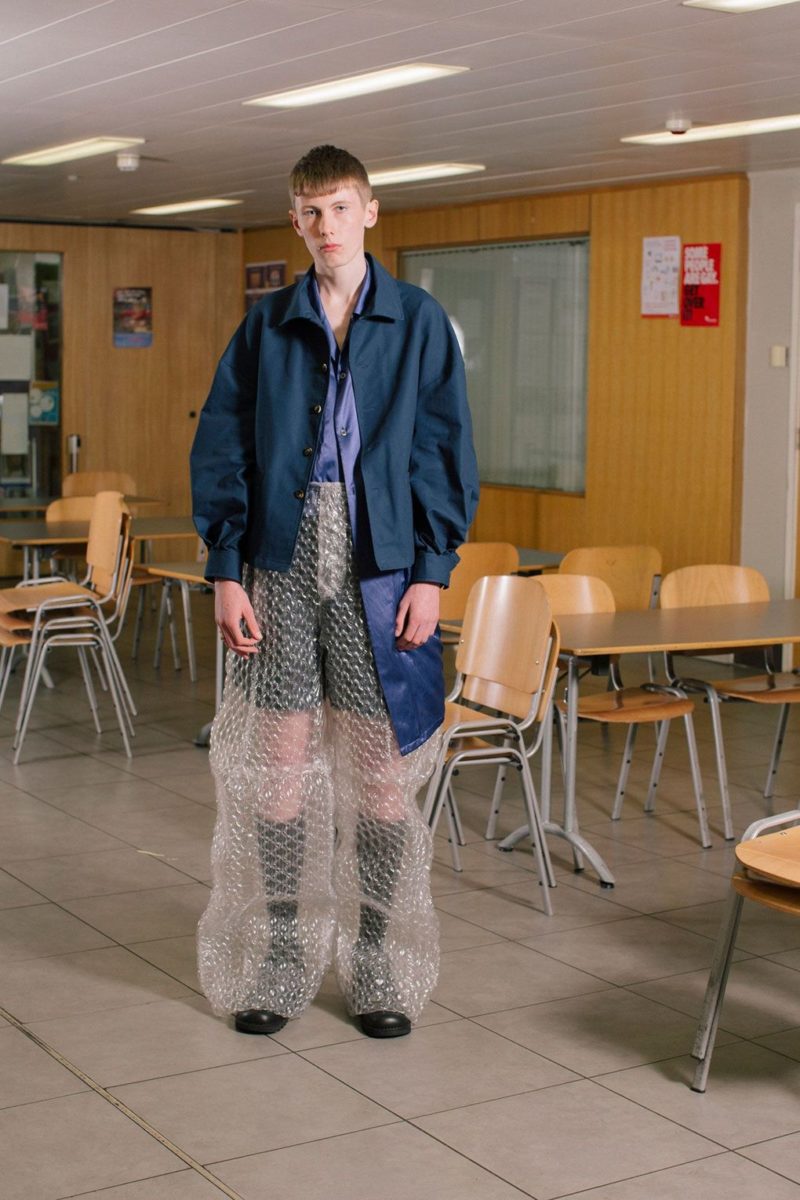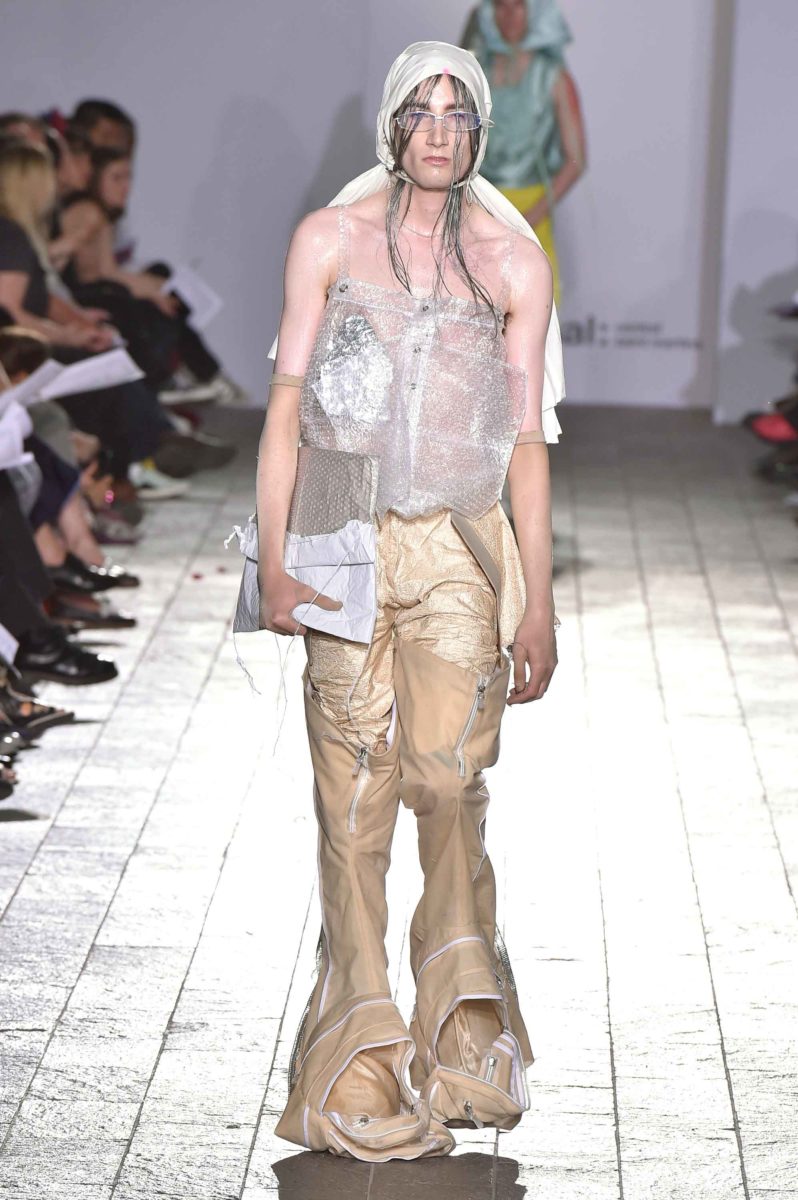Uniforms & The Apocalypse At LFWM SS18
By Something CuratedThe post-apocalyptic aesthetic was perhaps at its pinnacle in the 90s when Belgian fashion designer Martin Margiela was at the frontline. Prior to this though, in the 80s, Commes des Garçons presented a comparable concept; Rei Kawakubo’s 1982 show, for a collection entitled Destroy, was described in an article in the New Yorker as “a cadre of dishevelled vestals in livid war paint who stomped down the catwalk to the beating of a drum, wearing the bleak and ragged uniforms of a new order.” Where films like Planet of the Apes had long played with dystopian, end-of-the-world imagery, George Miller’s original Mad Max series added a polished punk edge, which influenced fashion designers and editors alike in the 00s.
During the last two menswear seasons, AW17 and SS18, there has been a resurgence of the visual trope, arguably a more nuanced version, with London designers referencing everything from preparations for the Armageddon, to alien invasion and zombie worlds. These collections, though ultimately means of expression, could be considered as uniforms to optimally navigate the current political climate, and the city itself. There is a collective engagement with high-performance materials and utility focussed details, with pieces feeling like armour to enter diverse combats. Visual commonalities include abundant pockets and other convenient storage means, padding, utility belts, straps and cords, as well as innovative uses of weather-proof fabrics, metals and protective headgear.
https://www.instagram.com/p/BVM-SB7hTTH/?taken-by=xanderzhou&hl=en
Occupying an unfamiliar office space, Xander Zhou’s characters found themselves in the ‘Supernatural, Extraterrestrial & Co’ headquarters for SS18, sporting uniforms featuring shirts with abstract cut outs, black rubber pouches affixed to outerwear, and full metallic ensembles, like the liveries of space-age beekeepers. For SS18, A-Cold-Wall*, a sartorial response to London street culture and the zeitgeist of Britain’s working class, helmed by Samuel Ross, explored a narrative which expands on shared work experiences. Amongst the reinterpreted tailoring and cut-and-paste sweatshirts, sat efficient, detachable waterproof hoods, like something you might expect to see at a camping store, as well as cosy puffer jackets.

Anarchy united with post-apocalyptic punk at KTZ, where contemporary streetwear was combined with urban utilitarianism, featuring bomber jackets emblazoned with military-inspired badges and all-capital text. A standout feature was the jagged stitches of metal, reminiscent of barbed wire, dispersed across seamlines. Chainmail trimmings made from repurposed drinks cans, dropping from hemlines, or meshing to form a metallic t-shirt, made the wearer appear prepared for some kind of medieval-inspired battle of the future.

As voters took to the polls for UK’s general election, the Royal College of Art’s MA fashion students put on their end-of-year show in east London. Typical of an RCA presentation, the show’s format included a range of performance pieces and installations as well as a more traditional fashion show. Inspired by monotonous and repetitive trips from studio to home during the course of the masters programme, Seunghee Lim began looking to the way everyday objects themselves can be “objectified.” Functionality took precedence, with numerous sealable pockets on jackets offering ample storage options, reducing trips back and forth from home to studio. The focus on optimisation, creating a garment that offers solutions to multiple problems simultaneously, has been a shared concern this season.
https://www.instagram.com/p/BVSzQmWD_2I/?taken-by=craig__green&hl=en
No stranger to the exploration of uniform, Craig Green’s clothes are well-known for their abundant straps, belts, buckles and string fastenings, contributing to an overall ethos of stylised utilitarianism. Last season, his models wore long macs, hats and tubular belts that he described as looking “like oxygen tubes,” inspired by the “terror of the sea.” SS18 opened with a series of theatrical looks that included kite-like sculptures in a palette of black, khaki and indigo, which gave way to white, and, ultimately, unexpected bursts of colour. Green and his team developed a new technique that was showcased throughout the season’s offering, tunnelling sports cord through fine channels in various fabrics; the resulting texture is like that of corrugated cardboard, rendering capes, coats and wide-legged trousers sculptural.

Emerging menswear brand DANSHAN, formed by Chinese-born Dan and Hong Kong-born Shan, interrogates gender while challenging the dynamics of the fashion economy. For this season, the duo explored male emotions and vulnerability by studying how the male body language develops throughout life and how it is affected by the society we live in. The collection sees a clear reference to school uniforms, reimagining them in a way that is intended to promote tactility and comfort. Most standout were the bubble wrap trousers, which evoked a sense of child’s play, like some improvised costume, as well as a very tangible image of protection.

Bubble wrap also featured in Central Saint Martins’ graduate Christian Stone’s collection, which included backpacks engineered onto the bottom of trousers and boots. “The starting point of this collection came from the idea of reviving the obsolete and the dead. This led to my aim of capturing a surreally sci-fi atmosphere in my collection,” Stone told us, explaining, “After seeing a cult sci-fi zombie movie called Re-animator, I got inspired and launched an imaginary corporation named after this movie. After the triumphant success of the potion invented to revive and manipulate dead body parts into monstrous creatures, it has expanded its range of products into a clothing line specifically designed for ‘the walking dead’, with the same concept of taking things apart and manipulating them back together.”
Though there is a natural tendency to find affinities between life and art, the influence of politics on culture is often contrary. According to the Guardian’s film editor Andrew Pulver: “Our troubled times are more likely to produce utopian art; a vision of a world we might wish for rather than fear.” Which is perhaps why, while many fashion designers and other creatives are revelling in the aesthetics of disaster, others, like Charles Jeffrey and Katie Eary, have instead decidedly embraced play, riotous colour and joyful motifs. In saying this, this season there has been a strong collective focus on fashion as a means of survival, in the sense that garments can be useful to us in tumultuous times, which is hard to ignore.
Feature image: A-Cold-Wall* SS18 (via Above the Sole) | Words by Keshav Anand